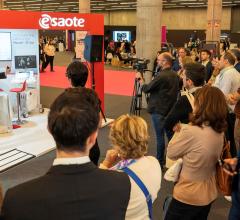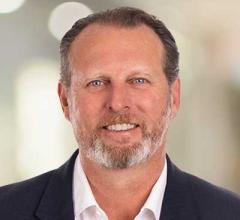
February 16, 2012 — A partnership between the American Society of Echocardiography (ASE) and GE Healthcare used technological innovations in the field to bring cardiovascular ultrasound to an underserved population in rural India. Sponsored by ASE, nine United States-based cardiovascular sonographers traveled to a remote location in northwest India, where an estimated 12 million people had gathered for a meditation camp, in late January. The sonographers and their India-based physician counterparts from Medanta, the Medicity, in Gurgaon, part of India’s National Capital Region, used technology to provide education to local clinicians and free imaging services to 1,030 pre-identified people.
The project, “ASE Global: Focus on India,” elevated cardiovascular ultrasound to a new level, taking it out of the lab to people who can benefit from increased access to the technology. “The first ASE Global initiative was a historic event and the first of its magnitude for the Society,” said Dr. Partho Sengupta, India liaison for the ASE International Relations Task Force and leader of the project. “It engaged physicians, sonographers and engineers across the globe at once for many different reasons – humanitarian, cultural and educational exchange, global health research, new technology evaluation and patient care applications.” Sengupta, associate professor and director of cardiovascular ultrasound research at New York’s Mount Sinai School of Medicine and an incoming ASE board member, added that the project “ushered in a new and exciting era that connects point-of-care ultrasound performed at remote underserved regions with specialists consulting from around the world.”
Clinicians leveraged GE Healthcare technology, including the Vscan pocket-sized visualization tool, to facilitate the acquisition of the images and provide an educational and awareness vehicle for India-based physicians. The Vscan systems were used on loan from GE Healthcare, which also provided an educational grant for the project to help support travel for sonographers. Vscan leverages ultrasound technology to provide clinicians with an immediate, non-invasive method to help obtain visual information about what is happening inside the body. In remote areas, as well as in today’s clinical setting, the ability to take a “quick look” inside the body may not only help clinicians detect disease earlier but also better triage patients.
More than 70 board-certified physicians at locations worldwide, ranging from major United States and Canadian hospitals to countries such as Georgia, Bulgaria, Greece and Saudi Arabia, were part of the image consultation. Several physicians attending ASE’s 22nd Annual Echo Hawaii conference also participated in the consultations.
“In this way,” said Patricia Pellikka, M.D., FASE, professor of medicine at the Mayo Medical School and director of Mayo Clinic’s echocardiography (ECG) laboratory, who is president-elect of ASE, “the expertise of members of the ASE was shared with more than 1,000 patients with suspected heart disease who would likely never have had access to echocardiograms. This represents a novel method of conducting a mission trip, as physicians were able to help without leaving their practices. And, sonographers from the U.S., specially trained in acquiring the images, were able to offer the one-on-one patient care that makes this technique so unique.” Pellikka also noted that “with technology like Vscan in the hands of trained professionals, echocardiography is portable, and can be helpful in heart assessments.”
“The ‘ASE Global: Focus on India’ project was incredible experience – not only in its mission to bring ultrasound technology to the most rural areas of India – but in the collaborative spirit it fostered between physicians all over the world,” said Al Lojewski, general manager of cardiovascular ultrasound for GE Healthcare.
Cardiovascular disease is a growing concern in India, recently having replaced communicable diseases as the country’s leading killer. According to Dr. R.R. Kasliwal, chairman of clinical and preventive cardiology and the community outreach and education program at Medanta Heart Institute, 75 percent of those affected live in rural areas.
“ASE is proud to have been involved in such a meaningful project. Many of these patients had not had access to contemporary medicine, and this one encounter may change their lives,” said ASE president James Thomas, M.D., FASE, FACC, Charles and Lorraine Moore chair of cardiovascular imaging at the Cleveland Clinic Foundation. “At the time of this mission, I was chairing ASE’s Echo Hawaii conference, and members of our faculty were able consult on 99 studies. Many of these cases were of severe heart disease, including valve dysfunction. It was humbling to realize the impact we could have from 8,000 miles away.”
For more information: www.asecho.org, www.seemyheart.org, www.gehealthcare.com





 August 27, 2024
August 27, 2024 








